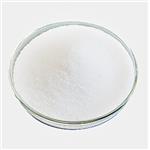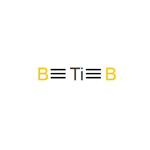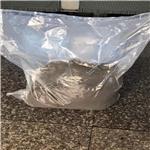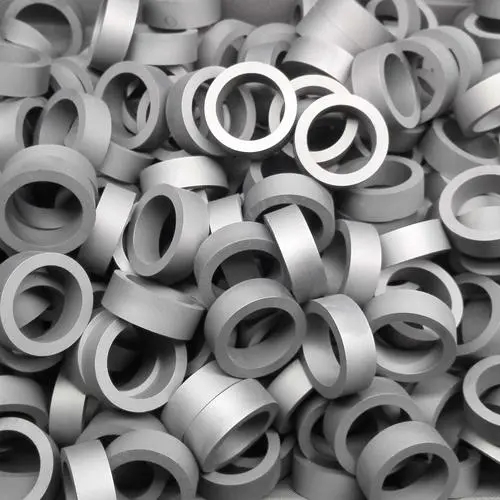Titanium diboride: General Properties; Industrial Preparation and Processing; Industrial Applications and Uses
Jan 16,2024
Description and General Properties
Titanium diboride, chemical formula TiB2, is a dense (4520 kg.m–3) and highmelting-point (2980°C) advanced ceramic material. Due to its high elastic modulus of 510 to 575 GPa, titanium diboride exhibits an excellent stiffness-to-density ratio. It is also a hard material with a Vickers hardness (3370) superior to that of tungsten carbide, and its fracture toughness (5 to 7 MPa.m1/2) is even greater than that of silicon nitride. The high flexural strength (350 to 575 MPa), combined with a high compressive strength (670 MPa), allows it to be used in military and ballistic applications.

As expected from its hexagonal crystal lattice, it is highly anisotropic with a Poisson ratio of 0.18 to 0.20. It retains its mechanical strength up to very high temperatures. By contrast with most ceramics, it is a good electrical conductor, with an electrical resistivity of only 15 μΩ.cm, and has a good thermal conductivity (65 W m–1K–1); its linear coefficient of thermal expansion is 6.4 μm/m K. From a chemical point of view, TiB2 is not attacked either by concentrated strong mineral acids such as hydrochloric acid or hydroflouric acids. Titanium diboride also has a very good oxidation resistance up to 1400°C. TiB2 has excellent wettability and stability in liquid metals such as aluminum and zinc and has many applications as a corrosion-resistant material such as crucibles and cutting tools in addition to some military applications.
Industrial Preparation and Processing
The most common process for producing large quantities of titanium diboride is by reacting titania (TiO2) with carbon and boron carbide (B4C) or boron sesquioxide (B2O3) as follows:
2TiO2(s) + C(s) + B4C(s) —> 2TiB2(s) + 2CO2(g);
2TiO2(s) + 5C(s)+ 5B2O3(s) —> 2TiB2(s) + 5CO2(g).
The final purity of the powder depends on the purity of the raw materials. Generally, several different grades of TiO2, carbon, B4C, and B2O3 can be used for the production of a wide panel of TiB2 products, depending on the required grain size, purity, and price. Vacuum-arc melting is used to produce a fully dense, single-phase titanium diboride. Graphite hearths are commonly used; the molten titanium diboride wets the graphite and exhibits excellent fluidity, and shapes are produced both by gravity and tilt-pour-casting methods. Sintered parts of titanium diboride are usually produced by either hot pressing or pressureless sintering, although hot isostatic pressing HIP has also been used.
Quite a number of different sintering methods and sintering aids are used to produce fully dense parts of titanium diboride. Hot pressing of titanium diboride is performed at temperatures above 1800°C in a vacuum or 1900°C in an inert argon atmosphere. However, hot pressing is expensive and the net-shape fabrication is not possible, hence the required shape must still be machined from the hotpressed billet. Some usual sintering aids used for hot-pressed parts include iron, nickel, cobalt, carbon, tungsten, and tungsten carbide.
Pressureless sintering of titanium diboride is a cheaper method for the production of net-shaped parts. Due to the high melting point of titanium diboride, sintering temperatures in excess of 2000°C are often required to promote sintering. Another method, called high-temperature synthesis (HTS), uses a powdered reducing metal such as magnesium or aluminum, and powders of titanium oxide and boron oxide. The materials are mixed and placed in a high-temperature crucible. This mixture is then ignited, and the self-sustaining reaction produces titanium diboride particles dispersed within a matrix of alumina or magnesia. After leaching the reaction mass, it remains as micrometric titanium diboride particles.
Industrial Applications and Uses
Titanium diboride was originally developed to make lightweight armor for US and Soviet army tanks. It also has many commercial applications such as nozzles, seals, cutting tools, dies, wear parts due to its corrosion resistance, and also molten-metal crucibles and electrodes. It is used in crucibles due to its high melting point and chemical inertness.
- Related articles
- Related Qustion
- What is the Crystal Structure of Titanium boride? May 23, 2024
Titanium boride (TiB2) is a commonly used ceramic material due to its excellent thermal conductivity, oxidative stability and wear resistance.
Supplementation with pyridoxal 5'-phosphate monohydrate can synthesize neurotransmitters such as dopamine and serotonin, maintaining a healthy nervous system.....
Nov 4,2025Biochemical EngineeringTungsten carbide can be used for a wide variety of applications. It has many applications that utilize its corrosion-resistant property such as wear plates, drawing dies, and wear parts for wire wearing machines.....
Jan 16,2024APITitanium boride
12045-63-5You may like
- Titanium boride
-

- $50.00 / 1kg
- 2025-06-20
- CAS:12045-63-5
- Min. Order: 1kg
- Purity: 0.99
- Supply Ability: 10000
- TITANIUM BORIDE
-

- $0.00 / 1kg
- 2022-09-23
- CAS:12045-63-5
- Min. Order: 1kg
- Purity: 99%
- Supply Ability: 1000kg
- Titanium Diboride
-

- $0.00 / 1kg
- 2022-09-21
- CAS:12045-63-5
- Min. Order: 1kg
- Purity: 99%
- Supply Ability: 1000kg






